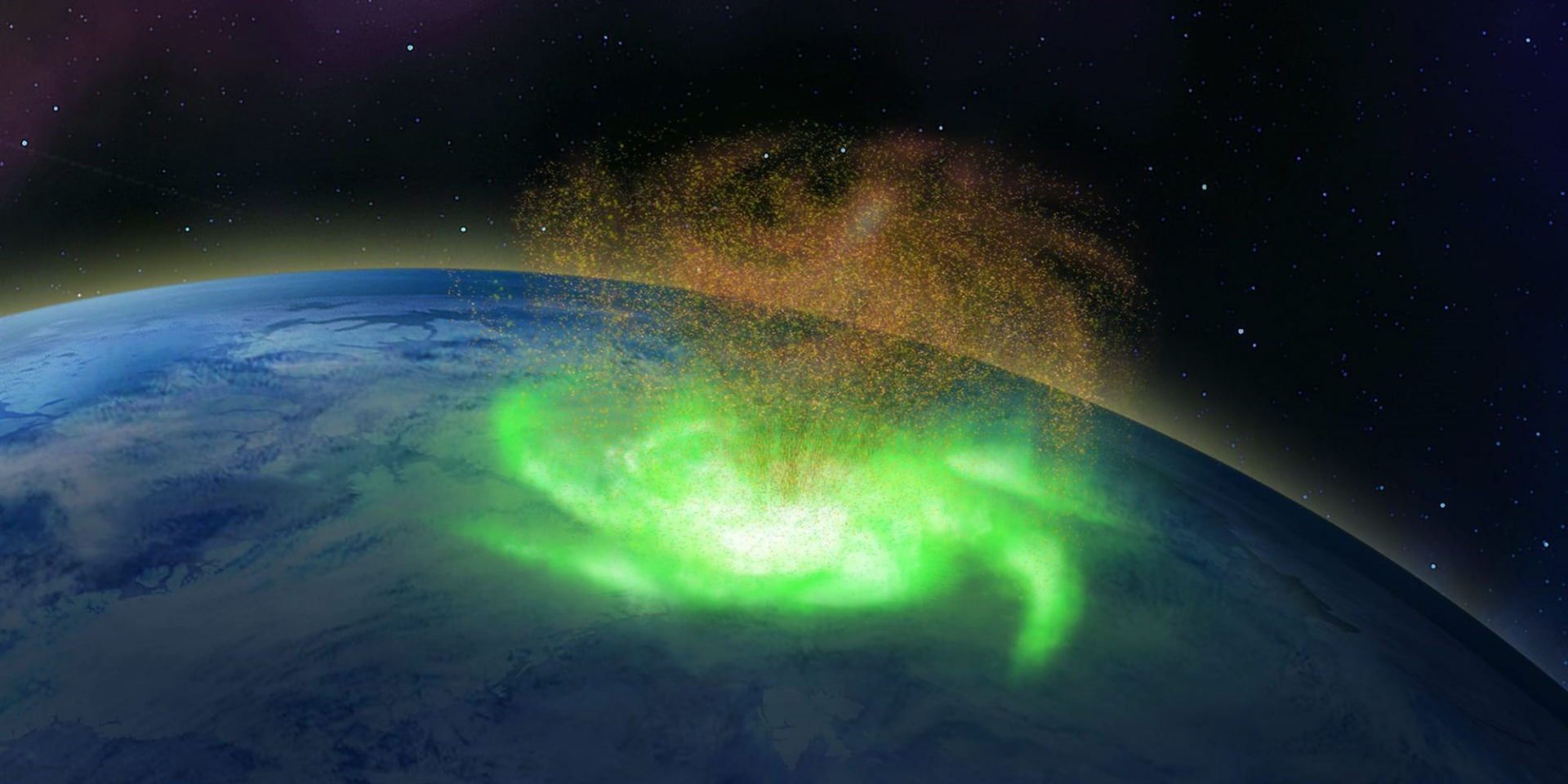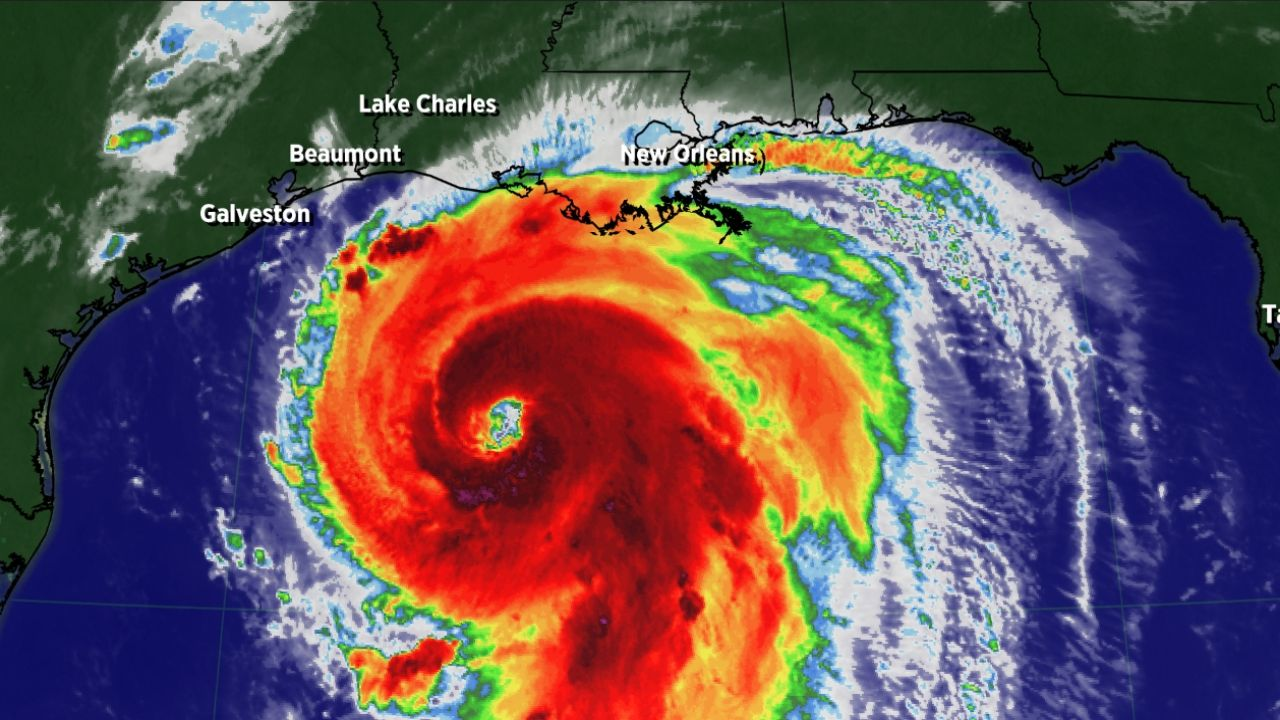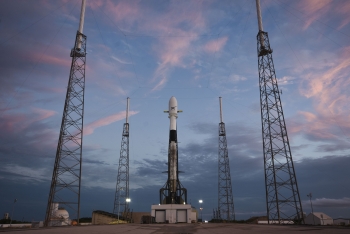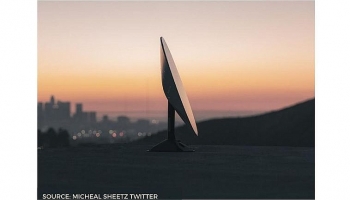Space Hurricane: What is it, Where it happens, Most Devastating Region
 |
| Illustration of a space hurricane, created using the observation dataQing-He Zhang / Shandong University |
What is space hurricane?
A space hurricane is a huge, funnel-like, spiral geomagnetic storm that occurs above the polar Ionosphere of Earth, during extremely quiet conditions. They are related to the aurora borealis phenomenon, as the electron precipitation from the storm's funnel produces gigantic, cyclone-shaped auroras. Scientists believe that they occur in the polar regions of planets with magnetic fields.
The phenomenon was discovered by a team of researchers from Shandong University in China, whom had observed the storm over the Arctic region on 20 August 2014, before identifying its nature in 2021. The research team also consisted of scientists from the United States, the United Kingdom, and Norway. The team observed the space hurricane for 8 hours, before it gradually broke down. The storm was observed during a period of low solar and geomagnetic activity. This was the first time that a hurricane-like storm had been observed in the upper atmosphere, and previously, it was uncertain whether they existed. Researchers believe that such space storms may be relatively common in our solar system and beyond, on planets with magnetic fields, because the storm observed in 2014 occurred during a period of low geomagnetic activity.
Hurricanes (tropical cyclones) on Earth are formed within the atmosphere by thunderstorms and angular momentum from the Earth's rotation, and draw up energy from the ocean surface, while space hurricanes are formed by plasma interacting with magnetic fields and draw energy down from the flow of the Solar wind.
Space hurricanes, like other space weather events, are caused by streams of plasma unleashed from the sun in what's known as the solar wind. As these clouds of charged particles hurl through space, they can fuel magnetic storms and trigger stunning displays of the northern or southern lights.
The space hurricane was characterized by a cyclone-like auroral spot with multiple spiral arms, due to precipitating electrons, strong circular plasma vorticity with zero horizontal flow at its center (the equivalent of the eye of an atmospheric hurricane), a negative-to-positive bipolar magnetic structure (implying a circular magnetic field perturbation), and a large and rapid deposition of energy and flux into the polar ionosphere (comparable to that during space weather superstorms). The storm extended from the Ionosphere upward to cover a large fraction of the dayside polar Magnetosphere, in the upper atmosphere, at an altitude of 110–860 kilometres (68–534 mi), in the Northern Hemisphere. Additionally, the space hurricane had multiple spiral arms, similar to conventional hurricanes, and the storm also rotated in a counterclockwise direction.The large plasma storm rained electrons instead of water.The storm also had an eye, a calm region that was encircled by the rotating plasma, similar to the eye in tropical cyclones.This electron rain produced a gigantic, cyclone-shaped aurora below the storm.
"Tropical storms are associated with huge amounts of energy, and these space hurricanes must be created by unusually large and rapid transfer of solar wind energy and charged particles into the Earth’s upper atmosphere," study co-author Michael Lockwood, a professor of space environment physics at the University of Reading in the U.K., said in a statement.
Where it happens
The spiral-armed storm swirled roughly 125 miles over the North Pole, churning in place for almost eight hours.
Scientists said last week they observed a previously unknown phenomenon — a 620-mile-wide swirling mass of plasma that roiled for hours in Earth's upper atmosphere, raining electrons instead of water.
The researchers labeled the disturbance a space hurricane because it resembled and behaved like the rotating storm systems that routinely batter coastlines around the world. But until now, they were not known to exist.
"It really wasn't expected," said Larry Lyons, a professor of atmospheric and oceanic sciences at the University of California, Los Angeles. "It wasn't even theoretically known."
Lyons was one of the authors of a study about the finding, which sheds new light on space weather events, that was published online Feb. 26 in the journal Nature Communications.
Scientists from China, the United States, Norway and the United Kingdom found the space hurricane while combing through satellite observations from August 2014. As satellites orbited around the planet and passed over the North Pole, they caught glimpses of a massive disturbance in the upper atmosphere.
The spiral-armed space hurricane swirled roughly 125 miles over the North Pole, churning in place for almost eight hours, Lyons said.
"You could see flows of plasma going around, which were like the winds of the space hurricane," he said. "These flows were strongest at the edge and decreased as you moved toward the eye in the center, before picking up again on the other side, just like the flow of air in a regular hurricane."
But that's perhaps where the similarities end. Unlike with regular hurricanes that can dump huge amounts of precipitation over Earth's surface, the scientists instead observed electrons raining into the upper atmosphere.
Eyewall – The most devastating region
 |
| The eyewall is the area immediately around the clear eye. This is usually the most dangerous part of a hurricane. Image of Hurricane Laura as taken on August 26, 2020. |
While the impacts from a hurricane can be all-encompassing, the worst of a hurricane’s winds are usually concentrated in the narrow ring around a hurricane’s center known as the eyewall.
The eyewall of a hurricane is usually home to its strongest winds and storm surge, though the latter depends in large part on a hurricane’s exact motion and a coastline’s geography.
Because of the added rotational push on the east side of the hurricane, the northern and eastern sides of the eyewall are typically the strongest portion of it. That’s usually where the strongest sustained wind speeds and gusts will be found over the entire span of a hurricane.
The center of the hurricane, the eye is typically cloud-less and tiny, usually no wider than 50 miles in diameter.
For all the advances in modern science, however, the formation of an eye of a hurricane remains somewhat of a mystery. Inside the eye of a stronger hurricane, though, the weather is often typically calm, an ironic juxtaposition with the violence of the surrounding eyewall.
What is also well-known is that a clear eye is an essential part of a stronger hurricane. The eye is also home to its lowest pressure value.
A clouded-over or ragged eye, however, is usually a sign of a weaker hurricane.
Also, the more symmetrical and concentric that a hurricane’s eye may be, the stronger it typically is as well.
While the eye of a hurricane might be calm, the sheer presence of one in a hurricane is usually a sign that it means serious business.
**READ MORE: Who is Yuri Gagarin - First Man to Fly into Space
 How many people are already using Starlink - Elon Musk’s space-based internet service How many people are already using Starlink - Elon Musk’s space-based internet service How many people are already using Starlink - Elon Musk’s space-based internet service? The Starlink internet service is currently in beta testing, but the company ... |
 5 Steps to Get and Sign up Starlink, SpaceX's satellite-internet service 5 Steps to Get and Sign up Starlink, SpaceX's satellite-internet service How to get and How to sign up Starlink Internet has been the question for most people since the release of the beta for the ... |
 Who is Elon Musk - CEO of SpaceX? Who is Elon Musk - CEO of SpaceX? How much do you know about Elon Reeve Musk FRS who is the founder, CEO, CTO and chief designer of SpaceX; early investor, CEO and ... |























